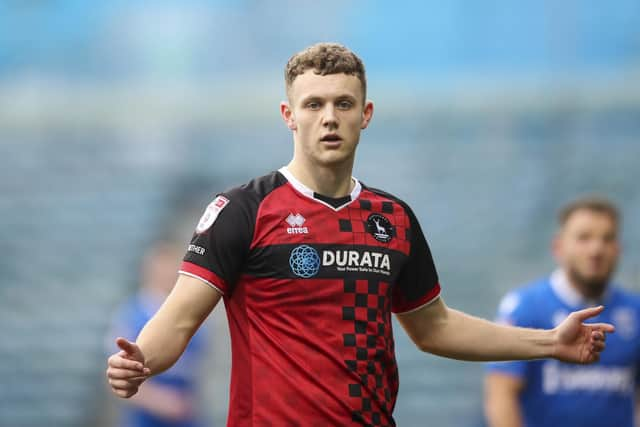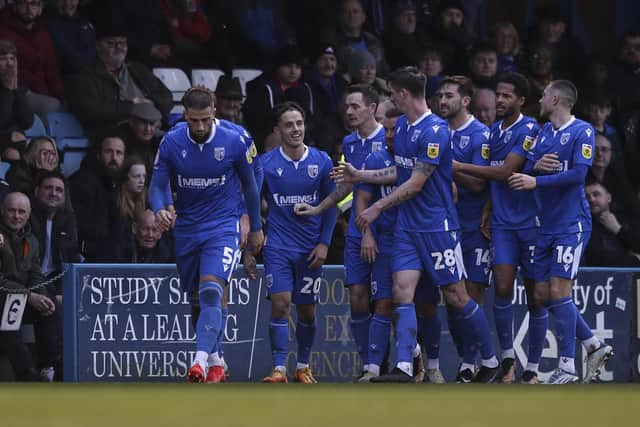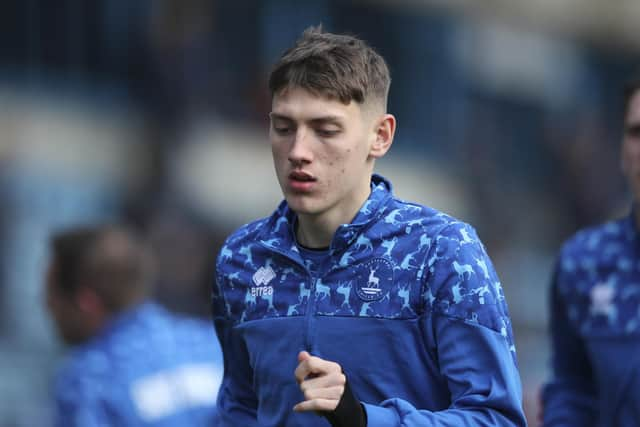Hartlepool United analysis: Where things went wrong against Gillingham
and live on Freeview channel 276
Keith Curle questioned whether his side displayed a lack of fight in their 2-0 defeat at the Priestfield or, simply, whether his players were good enough for the challenge which invariably lies ahead of them over the remaining 21 games.
Although there was a renewed optimism about the home side heading into the fixture - with a takeover and a number of shiny new signings on display, this was still Hartlepool taking on the side bottom of the table, the side five points below them, which, given how dismal Hartlepool’s season has been up to this point, tells its own story of the troubles at the Priestfield.
Advertisement
Hide AdAdvertisement
Hide AdThe significance of this match was dressed up in the media, it was dressed up by management and players of both sides heading into the game but there was only really one team who appeared to step their game up in light of that on the day, and it wasn't Hartlepool.


But why is that?
Of course, there are nuances to every game. But for whatever reason, Curle’s side appeared second best throughout.
To find out why, it is worth analysing some of the stats in the game, particularly in an attacking sense.
With Gillingham’s shocking record in front of goal in mind, Curle made the decision to be more aggressive in his approach by starting with a 4-3-3 variation as Jack Hamilton and Joe Grey joined Josh Umerah in attack.


Advertisement
Hide AdAdvertisement
Hide AdThe issue was, however, that despite having those three attackers on the field, Hartlepool rarely troubled Glenn Morris in goal with anything really clear cut, albeit they did hit the post late on and had a goal disallowed. And part of that may be down to a lack of synergy between the front three.
Grey was starting just his second league game of the season but both he and Hamilton were often too far apart from Umerah.
Between both Grey and Hamilton they shared just 35 touches in the match. Contrast that with Gillingham debutant Tom Nichols who had 39 on his own and that is already a cause for concern.
Now yes, that stat is slightly skewed given that Hamilton was withdrawn at half-time. But the Livingston loan striker had touched the ball just nine times in the opening 45 minutes as per Who Scored, none of those in the opposition box and only five of them in the opposition half.


Advertisement
Hide AdAdvertisement
Hide AdGrey, too, struggled to make an impact offensively with only nine of his 26 touches coming in the Gillingham half and, again, none of those in the box.
Nichols, on the other hand, enjoyed 30 of his 39 touches in the Hartlepool half, with four in the area including a significant one when diverting Alex MacDonald’s free kick beyond Ben Killip to open the scoring.
He and new strike partner Ollie Hawkins looked as though they had been playing together for a number of years instead of just a number of hours with Hawkins arriving at the Priestfield just two days before Saturday’s fixture.
And that was a viewpoint Gills boss Neil Harris also shared: “They looked like a pair who had played together for years, everything came off for them.
Advertisement
Hide AdAdvertisement
Hide Ad“That gave us the base. There was a little bit more structure to our play and a little bit more quality within the group. You saw players who have been here all season perform so much better as well.”
A quick glance at the heatmaps of both Nichols and Hawkins demonstrates how effective they were as a tandem with several highlighted areas alongside one another whereas, again, both Hamilton and Grey were rarely involved around that traditional No.9 area of the field occupied by Umerah.
This meant that Umerah was often isolated despite the options he should have had available to him. In credit to Umerah, he still gave the Gillingham defence something to think about when testing Morris with one of just two attempts on target for Hartlepool as well as finding himself out of luck when glancing David Ferguson’s cross off the post in the second half.
The striker did have the ball in the back of the net when flicking in Mark Shelton’s deflected effort, only for the offside flag to go up.
Advertisement
Hide AdAdvertisement
Hide AdBack to Hamilton and Grey, however, and a number of their additional attacking stats also demonstrate why Umerah may have been an isolated figure.
Hamilton has been effective in the air for Curle’s side in recent weeks, as can been seen when winning 10 of his aerial duels in the games against fellow strugglers Rochdale and Harrogate Town. Here, though, Hamilton won just one.
As per Wyscout, Hamilton had zero attacking actions with only three of his six attempted passes successful which, perhaps, reveals why Curle withdrew him at the break.
And although Grey remained on the field for much of the game, his attacking returns weren’t much better with one attempted dribble and two fouls drawn - most of his work, seemingly, coming inside his own half.
Advertisement
Hide AdAdvertisement
Hide AdBut it’s not just in attack where Hartlepool fell short. While Nichols and Hawkins tested the Hartlepool defence throughout the game, Gillingham’s midfield also won their battle.
“It seems to be a standard that we allow midfield players to run off us but we never seem to get our midfield players the freedom to run off their midfield players and it’s something that needs to get addressed,” Curle said.
Analysing that a little closer and there is some evidence to support Curle’s claims in an attacking sense.
For context we will analyse Hartlepool’s midfield trio of Nicky Featherstone, Mohamad Sylla and Matt Dolan against Gillingham’s Timothee Dieng, Shaun Williams and Dom Jefferies although the Gills’ set-up did lend itself more to a central-midfield two at times, while Dolan also moved back into a central defensive role in the second half.
Advertisement
Hide AdAdvertisement
Hide AdIn Featherstone, Sylla and Dolan, Hartlepool made 132 passes compared to 72 of Dieng, Williams and Jefferies.
But despite that discrepancy in Hartlepool’s favour it was the Gillingham trio who were slightly more effective.
Of those passes, as per Wyscout, Hartlepool’s midfield three attempted 13 passes into the final third in comparison to 18 from Gillingham with only two of those attempted into the penalty area against five from the home team.
Hartlepool’s trio did attempt more forward passes in general at 41, compared to 27 of Gillingham, but that could also be seen as a negative in that there weren’t as many penetrative passes - as well as the fact Jefferies was also able to get himself on the scoresheet.
Advertisement
Hide AdAdvertisement
Hide AdAt full-back, too, Gillingham just edged things with the most notable stat being their duo of David Tutonda and Robbie McKenzie were able to make 11 recoveries of possession in Hartlepool’s half compared to Hartlepool’s duo of Ferguson and Reghan Tumilty - who had zero recoveries in the Gillingham half between them.
It was the lack of threat going forward that allowed Gillingham to establish control.
Having scored seven in three games against relegation rivals, Hartlepool drew a blank at a crucial time against the league’s bottom side and that is something Curle will need to address with games against Rochdale and Colchester United.
